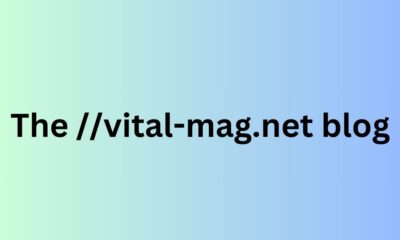BUSINESS
Hajoca Hub: The Internal Platform of Hajoca Corporation

The Hajoca Hub is a new intranet application established by Hajoca Corporation that has to optimise the companies’ activities and energise the employees. The features of the platform include; communication, inventory and training for the multiple locations that Hajoca has established. Hajoca Hub is an efficient grant of tools and critical information that helps the employees give their best to their customers. This platform is the living-vivid example of the company’s dedication to embrace new technologies at Hajoca as well as implement them for the benefit of every employee and the entirety of the enterprise. The ease of use and high functionality of the created Hajoca Hub suggests that this tool will remain the major asset for the constant further development of the company.
History of Hajoca Corporation
Hajoca Corporation is a wholesale distributor of plumbing, HVAC and industrial pipes in America that was started in 1858 as a plumbing supply store. The company has over 450 stores that are located in forty plus states and it deals with plumbing; heating; cooling; and industrial needs. Due to its quality and durability it has built a reputation over the years making it a go to supplier for contractors across the country. This tradition of high-quality work is further manifested in Hajoca Hub – the innovation and sharply oriented platform of the company.
Key Features of Hajoca Hub
- Centralized Communication: Simplifies interactions across branches.
- Inventory Management: Real-time updates on stock levels.
- Training Resources: Comprehensive tools for employee development.
- Data Analytics: Insights for informed decision-making.
Benefits of Using Hajoca Hub
Hajoca Hub offers numerous advantages, including enhanced efficiency and streamlined operations. Employees can access training materials, communicate with colleagues, and manage inventory from a single platform. This centralization reduces redundancies and ensures consistency across locations. Moreover, the platform’s data analytics capabilities allow managers to monitor performance, forecast trends, and make data-driven decisions. By integrating these features, Hajoca Hub not only boosts productivity but also reinforces Hajoca’s commitment to supporting its workforce and maintaining its competitive edge in the industry.
Training and Onboarding Through Hajoca Hub
The platform provides a seamless onboarding experience for new hires, offering access to training modules tailored to their roles. From learning product details to understanding company policies, employees can quickly become proficient in their responsibilities. Additionally, Hajoca Hub supports continuous professional development by providing resources like webinars, certifications, and industry updates. This focus on education ensures that all employees stay informed and capable of meeting the evolving demands of the market.
Data and Analytics Capabilities
The sophisticated tools for measuring business performance employed by Hajoca Hub are the key data and analytics indicators. They are able to view various parameters on the vehicular displays and include; sales trends, inventory turnover rates, and customer satisfaction. Lastly, the demand for services is predicted, consequently, the stock is optimised through the use of predictive analytics. These insights, in addition to outlining areas of growth, can also determine areas requiring rationalisation in order to efficiently use resources. These tools keep Hajoca on top of the industry and place it in a competitive edge as the industry rolls with innovations.
According to Hajoca Hub: Streamlining Operations
This solution saves time in terms of contract awarding and management, visualization and planning of the supply chain. Live status of stocks and deliveries help avoid possible disruptions of branch’s functioning and correct mistakes. Such level of coordination is especially helpful for the company with the scale of Hajoca that acts in several states and time zones. Based on this, Hajoca Hub positively impacts operational efficiency and the perception with which customers interact with this organization.
Hajoca Hub in the Future
Looking ahead, Hajoca Corporation aims to further enhance the platform’s capabilities by integrating more advanced technologies like artificial intelligence and machine learning. These upgrades will enable predictive modeling, improved inventory management, and even more personalized training programs. Additionally, plans to expand customer and supplier integration will make Hajoca Hub an even more powerful tool for collaboration and growth. By continually innovating, Hajoca ensures that its platform remains a leader in the industry.
Conclusion
Hajoca Hub is more than just an internal platform—it’s a cornerstone of Hajoca Corporation’s strategy to stay competitive in an ever-evolving industry. By combining advanced features with a focus on employee support, the platform embodies Hajoca’s dedication to excellence and innovation. Through Hajoca Hub, the company continues to set new standards for operational efficiency and customer service, ensuring its place as a leader in the distribution of plumbing, heating, cooling, and industrial supplies.
-

 BIOGRAPHY5 months ago
BIOGRAPHY5 months agoBehind the Scenes with Sandra Orlow: An Exclusive Interview
-

 HOME11 months ago
HOME11 months agoDiscovering Insights: A Deep Dive into the //vital-mag.net blog
-

 HOME1 year ago
HOME1 year agoSifangds in Action: Real-Life Applications and Success Stories
-

 BIOGRAPHY12 months ago
BIOGRAPHY12 months agoThe Woman Behind the Comedian: Meet Andrew Santino Wife




























